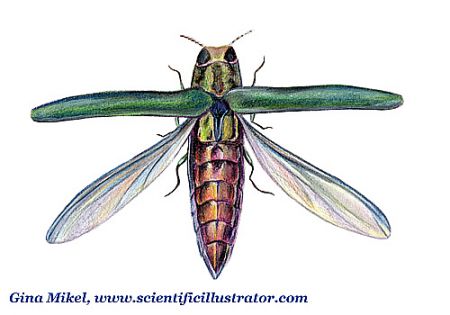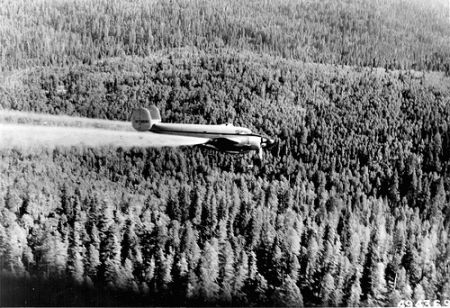From Knowing the Land is Resistance
http://knowingtheland.wordpress.com
It was here in Comber, a town in Essex county, which makes up the southern most tip of Ontario, that we first noticed it. We’ve stopped in a sports field to watch the sunset. What we see though, silhouetted against the sky’s red glow, is a long line of dead Ash trees. Ever since the Emerald Ash Borer first appeared in Hamilton, we have been hearing stories about its effect on forests further south. But this is our first time seeing a whole stand of Ashes killed by the exotic beetle.
Now we sit with the dead trees as it gets dark, reflecting with concern on the forests we love back home. Last year, we started spotting the irridescent green beetles in Cootes Paradise. This year, we can’t go for a walk there without passing one. The White Ashes that grow on those hills, with their tall diamond-bark trunks and elegant symmetric branches, are old familiar forest friends – it’s heartbreaking to imagine the trails without them.
This is far from the first invasive outbreak to devastate a prominent tree species in this area; Chestnut Blight and Dutch Elm Disease are two others of note. In both of those cases, government and conservationists embarked on hugely expensive campaigns to ‘save’ the trees, featuring massive cullins of infected trees through various methods. These strategies failed to prevent the infestation from spreading, and it’s important to recall that no similar strategies have ever succeeded. In the case of the Chestnut Blight, we now understand that this practice actually reduced the Chestnut’s capacity to develop resistance to the disease.
As we sit with these Ashes here in Comber though, we begin to notice that most of the dead trees are sprouting new growth from the roots. Around them, many young Ashes are growing from seed, taking advantage of the suddenly-open canopy above. Our initial feelings of doom for the species subsides as we consider the amazing capacity of all trees to overcome population decline in the face of disease, insects, glaciers, and, sometimes, even humans. Some of these young trees appear to be two or three years old, and their happy fresh leaves stir hope inside us.

